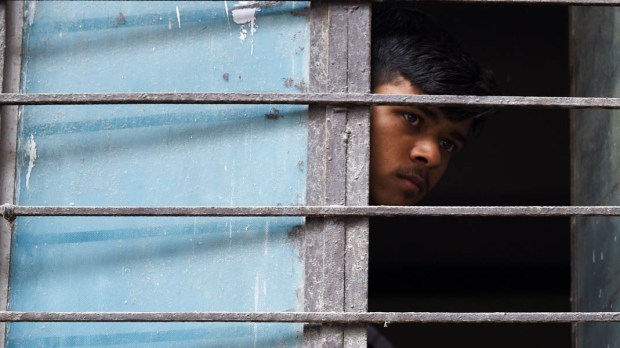One of the topics dear to Pope Francis is that of gossip and rumors, which wound and kill the community. “There is no such thing as innocent gossip,” he said on September 13, 2013, during his homily at Domus Sanctae Marthae at the Vatican. In his speech on November 7, 2014, to participants in the national assembly of the Italian Conference of Major Superiors, the pope even used the expression “terrorism of gossip.”
The pope expressed himself even more forcefully in his message for the 52nd World Communications Day, celebrated last May 13, on the day of Pentecost. In the text, the Pontiff spends some time on the phenomenon of so-called fake news, or hoaxes, which “grasps people’s attention by appealing to stereotypes and common social prejudices, and exploiting instantaneous emotions like anxiety, contempt, anger and frustration.” Spurious stories of this kind often rely “on a manipulative use of the social networks and the way they function.” For Francis, the first fake news in history was the story created by the “crafty serpent” mentioned in the Book of Genesis, which then, unfortunately, resulted in the “first fratricide” in history: Cain, who slays his brother Abel (Genesis 4).
The most recent episode, in Maharashtra
The fact that the pope’s words aren’t metaphorical is demonstrated by news from India. On July 2, 2018, the Mumbai police in the state of Maharashtra arrested a total of 23 people suspected of being involved in the lynching of eight people, five of whom died. The lynchings took place on Sunday, July 1, in a village in the Dhule district of Rainpada.
As the Hindustan Times explains, the villagers, alerted by a fake warning shared on the highly popular messaging app WhatsApp, mistakenly thought they were confronting a group of “child lifters” (kidnappers). What triggered the homicidal violence was the fact that the victims, all members of a nomadic community, were talking with a young girl.
According to the paper’s report, lynchings caused by fake news spread over social networks about presumed kidnappers have caused, from last May 20 to June 30, a total of 14 deaths. Among them—ironically—is a social worker, 33-year-old Sukanta Chakraborty, who had been hired by the Information and Culture Department of the State of Tripura (in northeastern India) for a campaign against rumor-mongering, specifically targeting the false messages and videos circulating on social media.
Unfortunately, the phenomenon is very widespread. Lynchings have been reported in 10 of the total 36 states and territories of the Indian Federation: Andhra Pradesh, Assam, West Bengal, Gujarat, Karnataka, Madhya Pradesh, Maharashtra, Odisha, Telangana and Tripura. There are dozens of news stories talking about innocent people being savagely beaten because they “looked suspicious,” according to the Hindustan Times.
In the case of last Sunday’s lynching, the video that was at the origin of the violence by the residents of Rainpada had been recorded by a Pakistani NGO, Roshni Helpline, precisely with the goal of sensitizing the public to the phenomenon of “child-lifting” and child trafficking. It was distorted by fake news postings and rumor-mongering on social media.
“Don’t believe these things”
While he points his finger at social media, the general director of the police of the state of Tripura, Akhil Kumar Shukla, has asked villagers “not to believe in such rumors.” “The problem is once the message gets viral it is difficult to check it. If people stop believing in such messages, the problem can be handled,” said the general director of the police of the state of Odisha, RP Sharma, to the Hindustan Times.
“Don’t believe these things” is also the message that 39-year-old policeman Rema Rajeshwari is transmitting to the people in the villages she visits in her district in the state of Telangana, in southeastern India. Her mission is to try to halt the impact that fake news on social networks has on the population, explains Iain Marlow on Bloomberg.com, which published a profile of the police officer.
“You see these messages, these photos and videos, but you don’t check if they’re real or fake, you just forward them,” explains Rajeshwari to the villagers. “Don’t spread these messages. And when strangers come to your village, don’t take the law into your hands. Don’t kill them,” she says, trying to convince her audience.
The young police officer, who entered the Indian Police Service in 2009, has organized training sessions with more than 500 officers. “We had to educate our officers first, before sending them out into the community to educate the people,” explains
Rajeshwari, who has also spoken with hundreds of village leaders.
Rajeshwari’s campaign seems to be bearing fruit. Indeed, no deaths tied to fake news have been recorded in the more than 400 villages under the young police officer’s control, Marlow points out.
The drama of the Rohingya
Social media have also played a role in the humanitarian drama of the Rohingya people in Myanmar (formerly known as Burma). Hate speech, which has spread like a wildfire on social media—especially Facebook—has fomented violence against the Rohingya Muslim minority. Experts from the United Nations are convinced this is the case, explains Tom Miles in a Reuters article.
In 2014, the author emphasizes, less than 1 percent of the population of Myanmar had access to the internet; today, a quarter of the population uses Facebook. Speaking with journalists last March, the chairman of the U.N. Independent International Fact-Finding Mission on Myanmar, Indonesian lawyer Marzuki Darusman, stated that social media have played a “determining role” in the crisis.
“Everything is done through Facebook in Myanmar,” added Yanghee Lee, U.N. special representative for human rights, who fears that the popular social network “has now turned into a beast.”
Facebook & WhatsApp
The well-known instant messaging app WhatsApp, purchased by Facebook in 2014, is extremely popular in India. According to Neha Dharia, analyst at market research firm Ovum and consultant in Bengaluru (the city formerly named Bangalore, also known as the “I.T. capital” of India), quoted by Marlow, the app currently has more than 200 million users in India [1], who sent nearly 13.7 billion messages each day.
Concerned about the impact that fake news has on the population, Indian Information Technology Minister Ravi Shankar Prasad, last Wednesday, July 4, asked WhatsApp and Facebook to strengthen controls on the sharing of fake news. “They must find a way to stop the spread of such messages,” he declared. “They are making good money in India, so they need to add more safety and security features,” Prasad added. On Monday, July 2, the government of prime minister Narendra Modi asked the American company to regulate “irresponsible and explosive messages” on its platform.
On its part, the Facebook-owned company, which in a letter to the Ministry of Information Technology declared that it is “horrified by these terrible acts of violence,” has already been working for some time on new systems to deal with the online fake news phenomenon.
The platform, which has more than 1.5 billion users worldwide, is in fact working on a new function which will mark messages which have been forwarded and therefore will allow users to verify whether or not the text they have received was written by the sender or was copied from another conversation.
*
1] According to UN estimates, India currently has a population of approximately 1.35 billion people (with which it would even surpass China).

